This beautiful pink sage was selected by plantsman Piet Oudolf, from his own garden. These lavender pink spiky flowers are invaluable in the summer garden. They are drought tolerant once established and attract butterflies and hummingbirds!
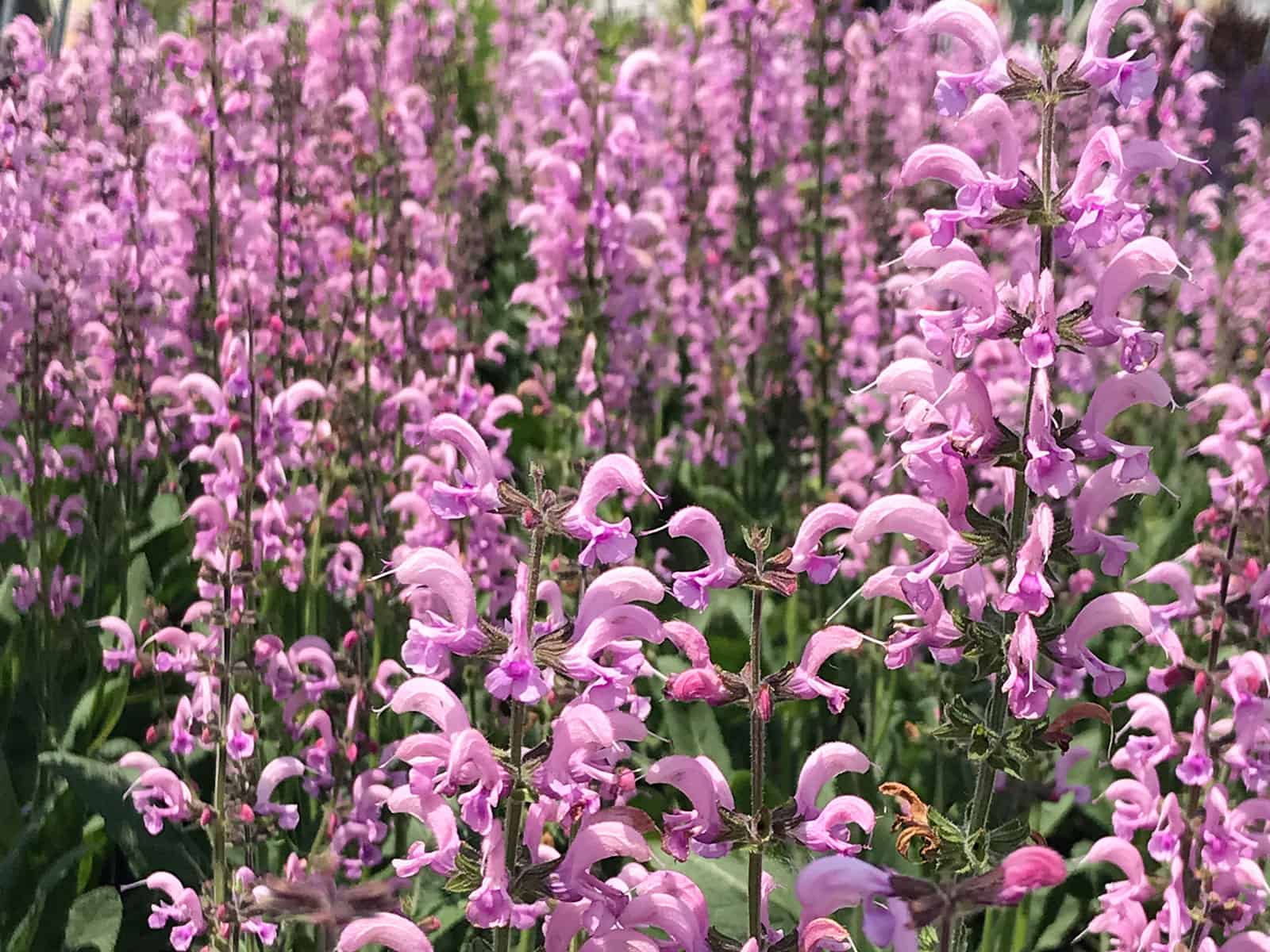
This beautiful pink sage was selected by plantsman Piet Oudolf, from his own garden. These lavender pink spiky flowers are invaluable in the summer garden. They are drought tolerant once established and attract butterflies and hummingbirds!
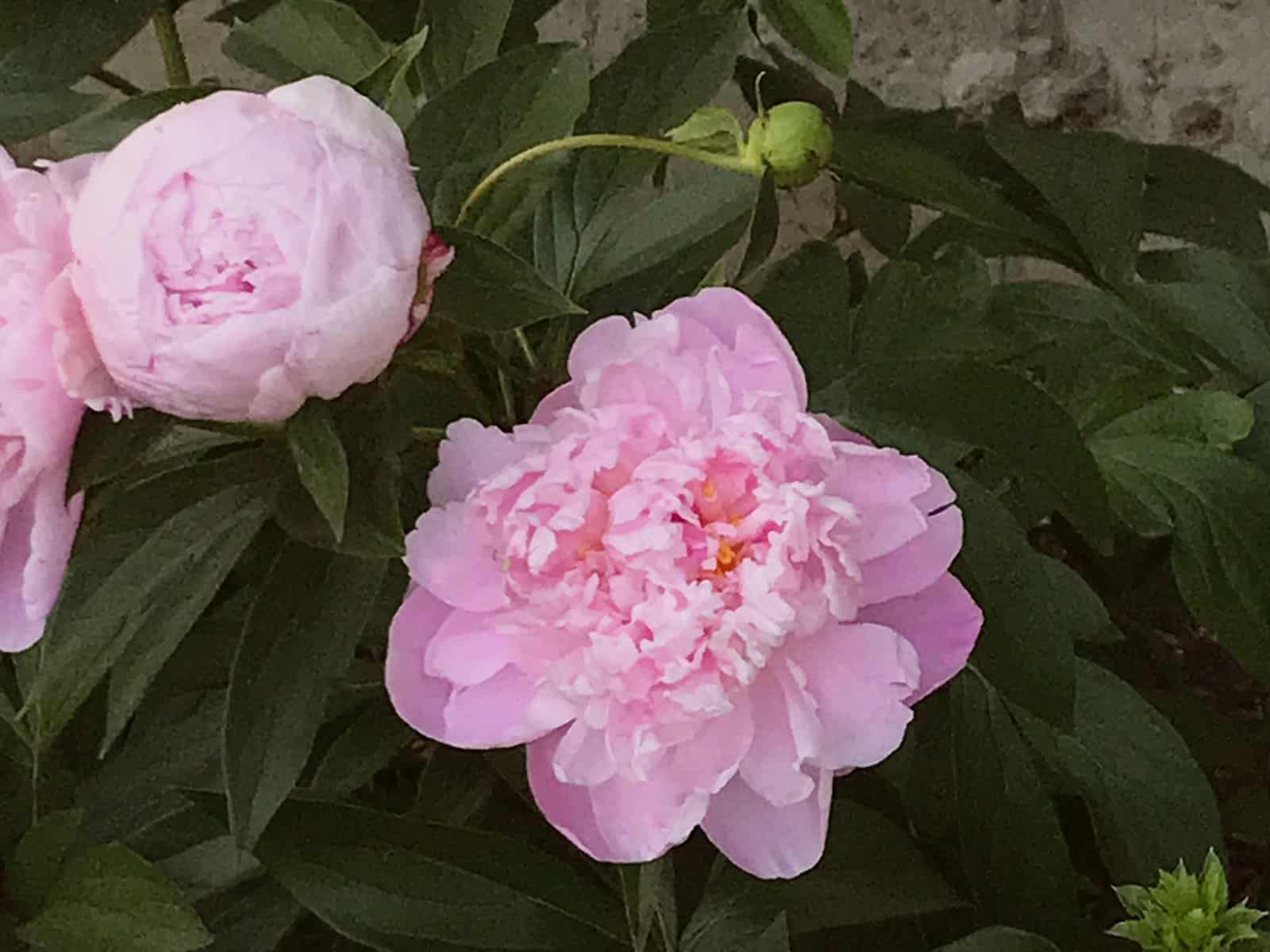
There are hundreds of different varieties of peonies. We selected ‘Sarah Bernhardt’ because many of our clients ask for a pink selection. These bring a lovely sweet scent to the garden when in bloom and make excellent cut flowers. It’s a long time favorite (since 1906) and dependable year after year.
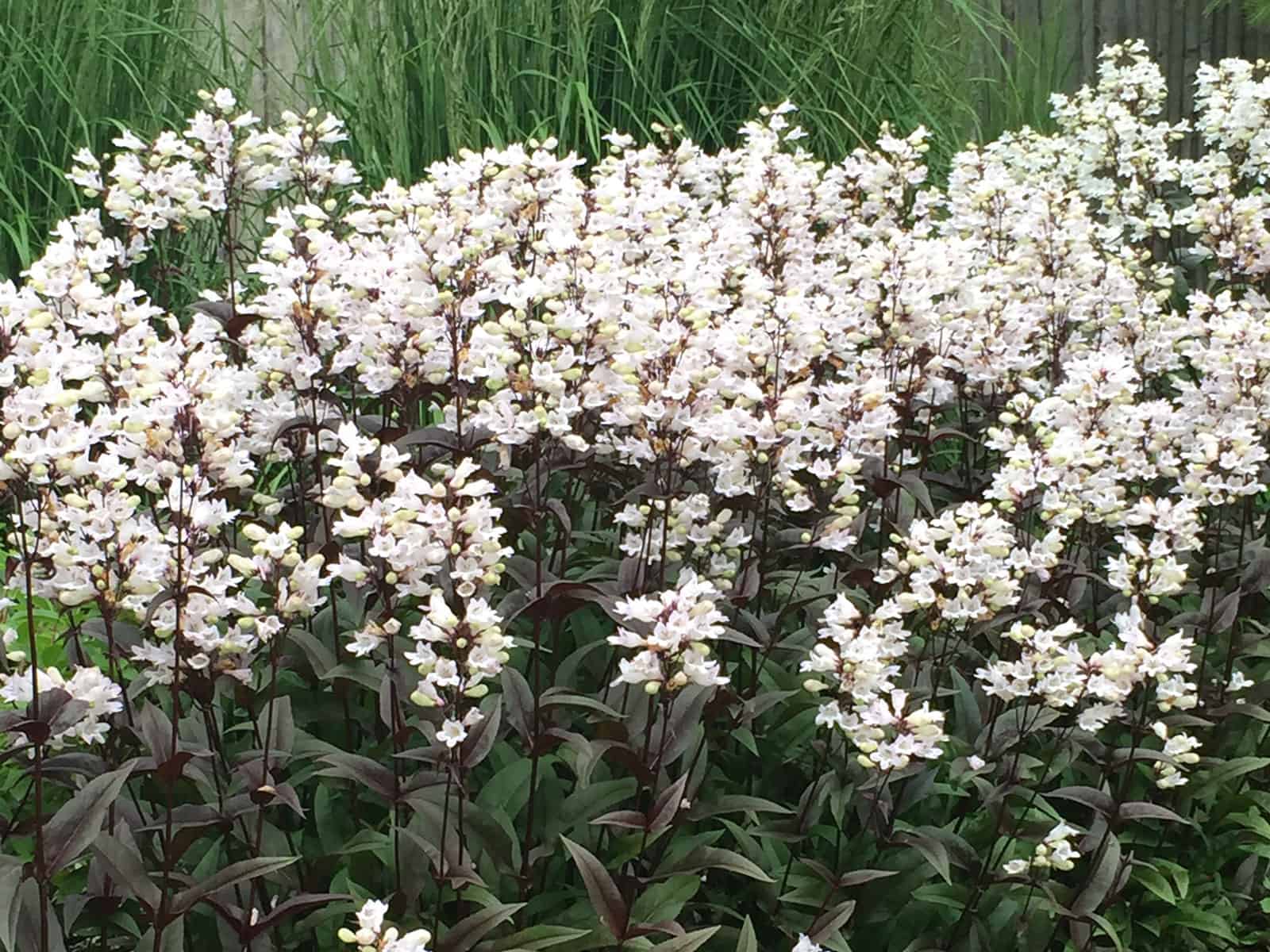
Developed at the University of Nebraska, this is an outstanding taller selection for the middle to back of a sunny border. It forms a mound of deep purple-red foliage, bearing spikes of bicolor soft and deep-pink bell-shaped flowers in summer. An easy border plant, also tolerant of heat and humidity. Terrific as a cut flower. In particularly rich soil this may need to be staked. A 2008 introduction from TerraNova Nurseries in Oregon. USPP#20013: unlicensed propagation prohibited. Registered with COPF.
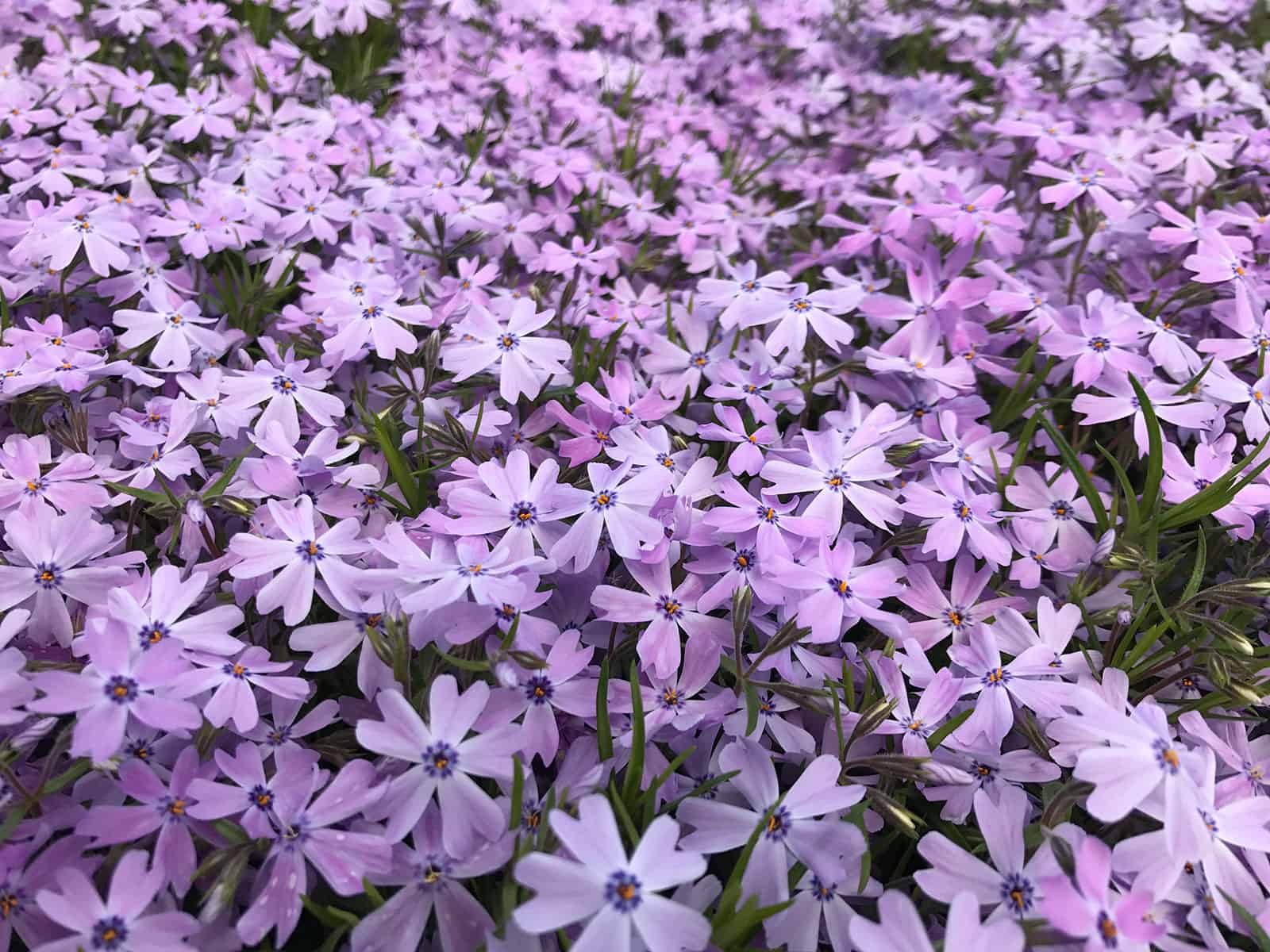
There are many selections of Moss Phlox, all of them forming a low mound or cushion of dark green needle-like leaves, smothered by tiny flowers in late spring. This is a vigorous variety, with a showy display of deep lavender-blue flowers. Exhibits excellent disease resistance. Clip plants lightly immediately after blooming to encourage a dense habit. Wonderful in the sunny rock garden, for edging, or in mixed containers. Clumps may be ripped apart and divided in early fall, after 3 to 4 years. Requires good drainage. Drought tolerant, once established.
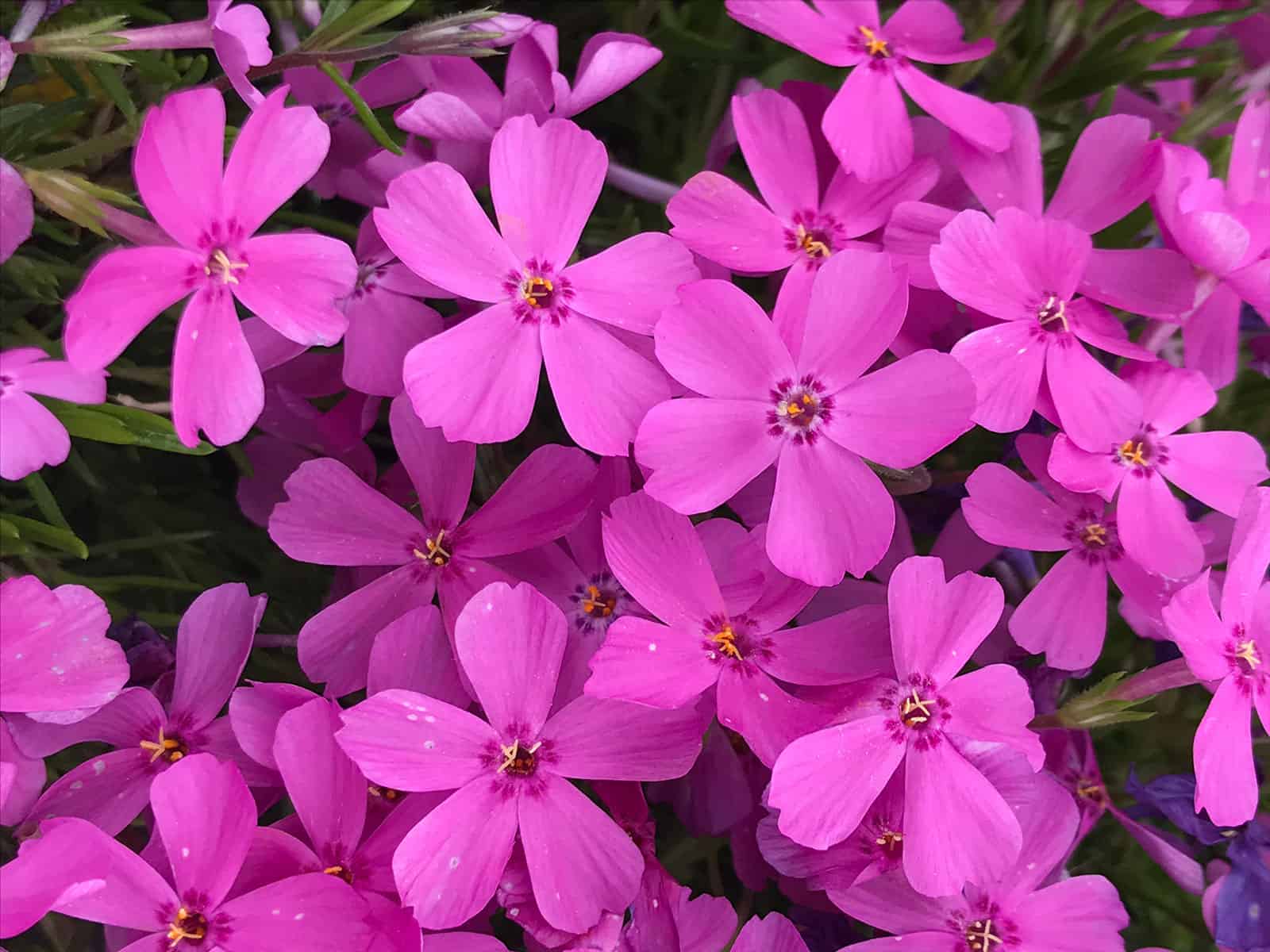
There are many selections of Moss Phlox, all of them forming a low mound or cushion of dark green needle-like leaves, smothered by tiny flowers in late spring. This variety produces a showy display of hot-pink flowers and has a medium-fast growth rate. Clip plants lightly immediately after blooming to encourage a dense habit. Wonderful in the sunny rock garden, for edging, or in mixed containers. Clumps may be ripped apart and divided in early fall, after 3 to 4 years. Requires good drainage. Drought tolerant, once established.
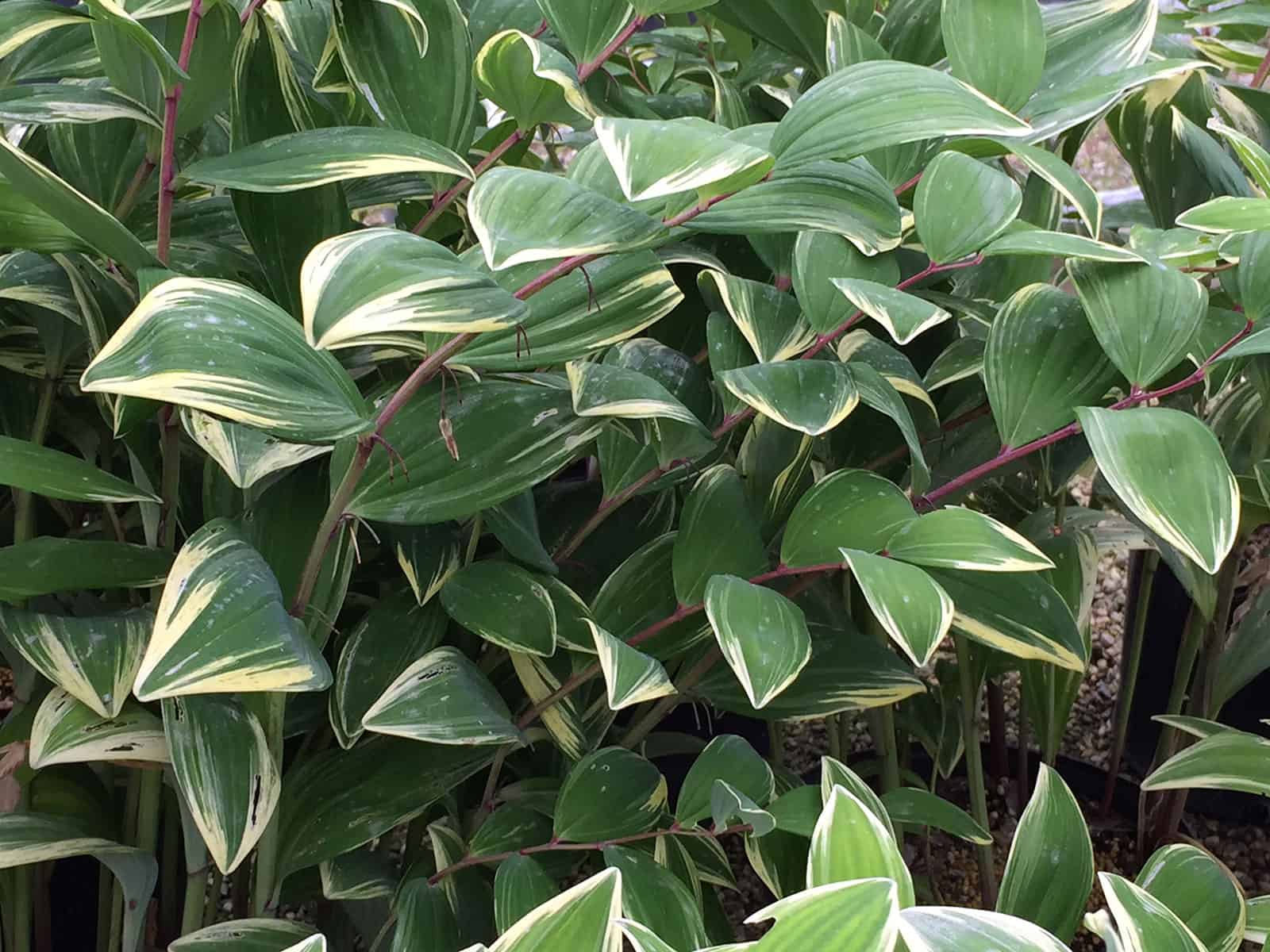
Culture: Easily grown in moist, humusy, organically rich, well-drained soils in part shade to full shade. Best performance occurs in cool sun-dappled shady areas. Dislikes hot summer conditions. Slowly spreads by thin rhizomes to form colonies in optimum growing conditions.
Noteworthy Characteristics: Polygonatum odoratum, commonly called fragrant Solomon’s seal, is a rhizomatous, shade-loving perennial that typically grows to 18-24” tall on low, gracefully arching, angled (as opposed to cylindrical), unbranched stems. It is native to shaded slopes and woodland areas in temperate regions of Europe and Asia. Each stem (to 18” long) rises singly from the rhizome clad with 8-17 alternate, upright, parallel-veined, elliptic to ovate-oblong leaves (to 4” long). Leaves turn an attractive yellow in fall. Greenish-white tubular flowers (to 7/8” long) on short pedicels droop (usually in pairs but sometimes solitarily) from the leaf axils along and beneath the arching stems. Flowers have a sweet, lily-like fragrance. Flowers bloom late spring to early summer (May-June). Flowers are followed by attractive pendulous blue-black berries (each 1/4″ diameter) in fall which hang downward from the leaf axils.
Genus name comes from Greek words poly meaning many and gonu meaning knee joint in reference to the jointed plant rhizomes. Early herbalists believed that plants with jointed rhizomes were helpful in treating human joint disorders.
Specific epithet comes from the Latin word odoratus meaning sweet smelling in reference to the fragrance of plant flowers.
Common name is usually considered to be in reference to the large, circular seals (leaf stalk scars) located on the rhizomes. However, some authorities suggest the common name actually refers to “wound sealing properties” of the plant.
‘Variegatum’ is a popular cultivar of var. pluriflorum. It features showy light green leaves edged with white. New stems are tinged with maroon red. It is a superior foliage ornamental for shady garden areas. Perennial Plant Association’s 2013 Perennial Plant of the Year. Synonymous with and formerly known as P. odoratum var. thunbergii ‘Variegatum’.
Problems: No serious insect or disease problems. All parts of this plant may cause discomfort if ingested by humans (plants contain small amounts of saponin and convallamarin). Watch for slugs, snails, weevils and sawflies. Leaf spot and rust infrequently appear.
Garden Uses: Best in woodland gardens or shady areas of rock gardens or border fronts. Foliage is attractive in flower arrangements.
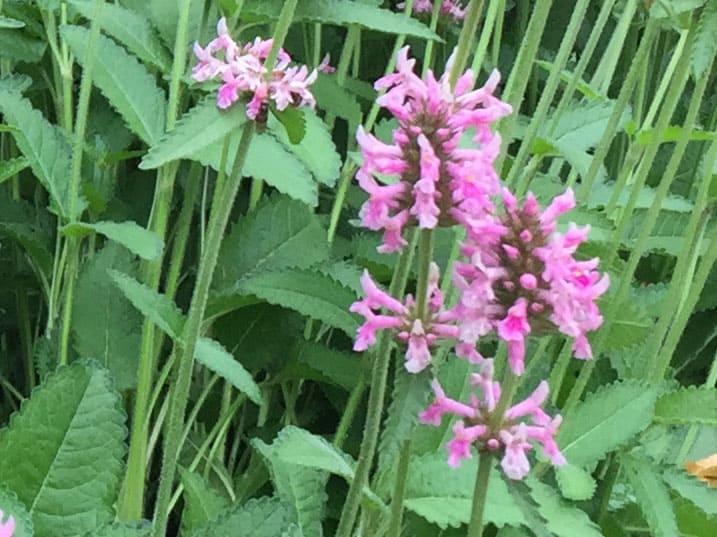
A cousin to the familiar Lamb’s-Ears, but not at all similar. This is a clump-forming perennial, forming a low mound of green foliage that remains attractive all season long. In early summer the upright spikes of ‘cotton candy’ pink flowers appear attracting bees to the nectar. Removing faded flowers will encourage more buds to form for weeks on end. An interesting and unusual perennial for near the front of the border, or in containers. Plants may be clipped back hard immediately after blooming, to tidy up the clumps for the rest of the season. Easily divided in early spring. Bred by Richard Hawke and introduced to the market by Chicago Botanic Garden. USPP#21436: unlicensed propagation prohibited.
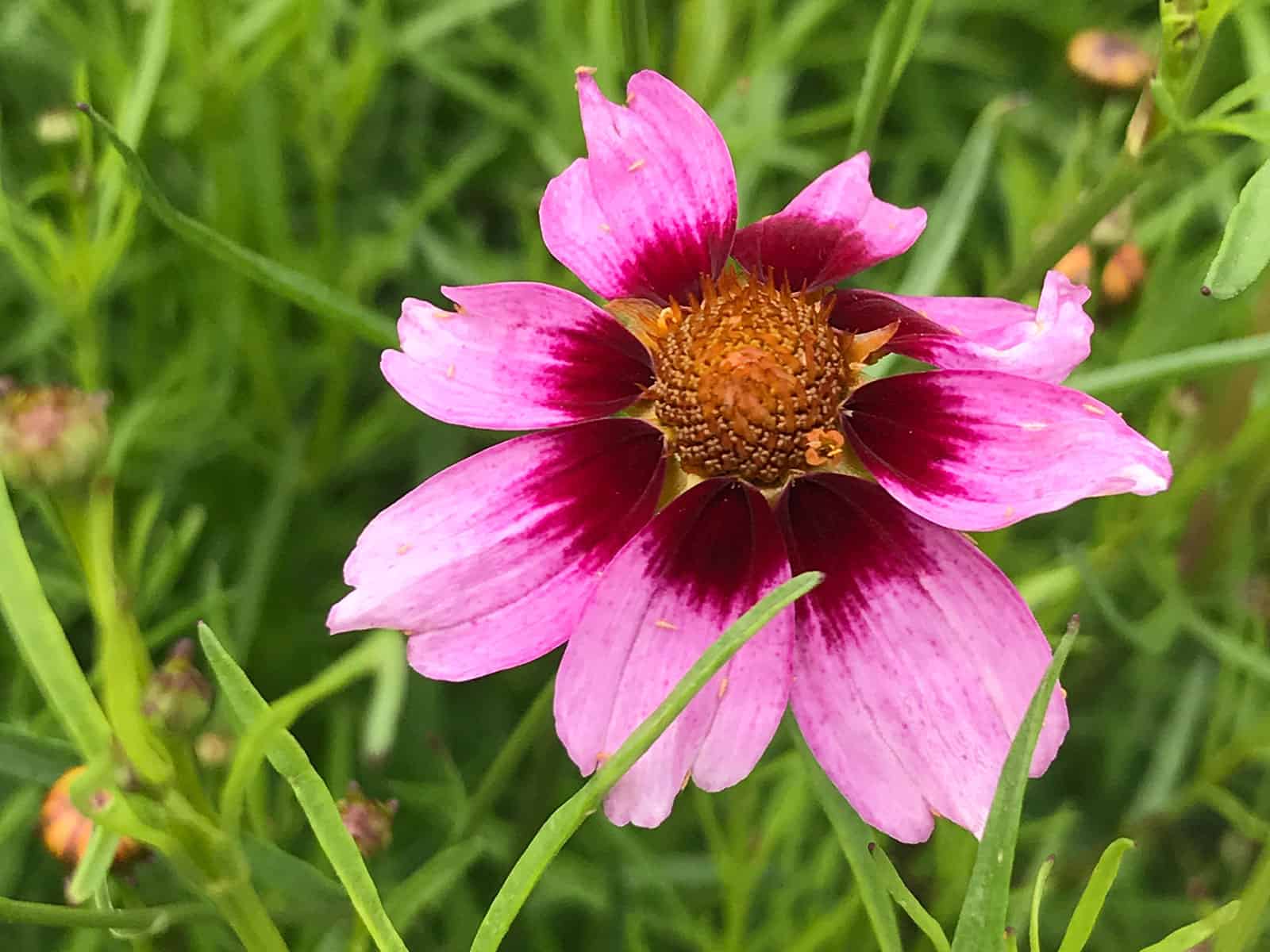
An improved selection of the Coreopsis ‘Rosea’. This forms a low, bushy mound of ferny green foliage, bearing masses of pink to rose colored daisy like flowers. Flowering begins in early summer and continues for weeks.
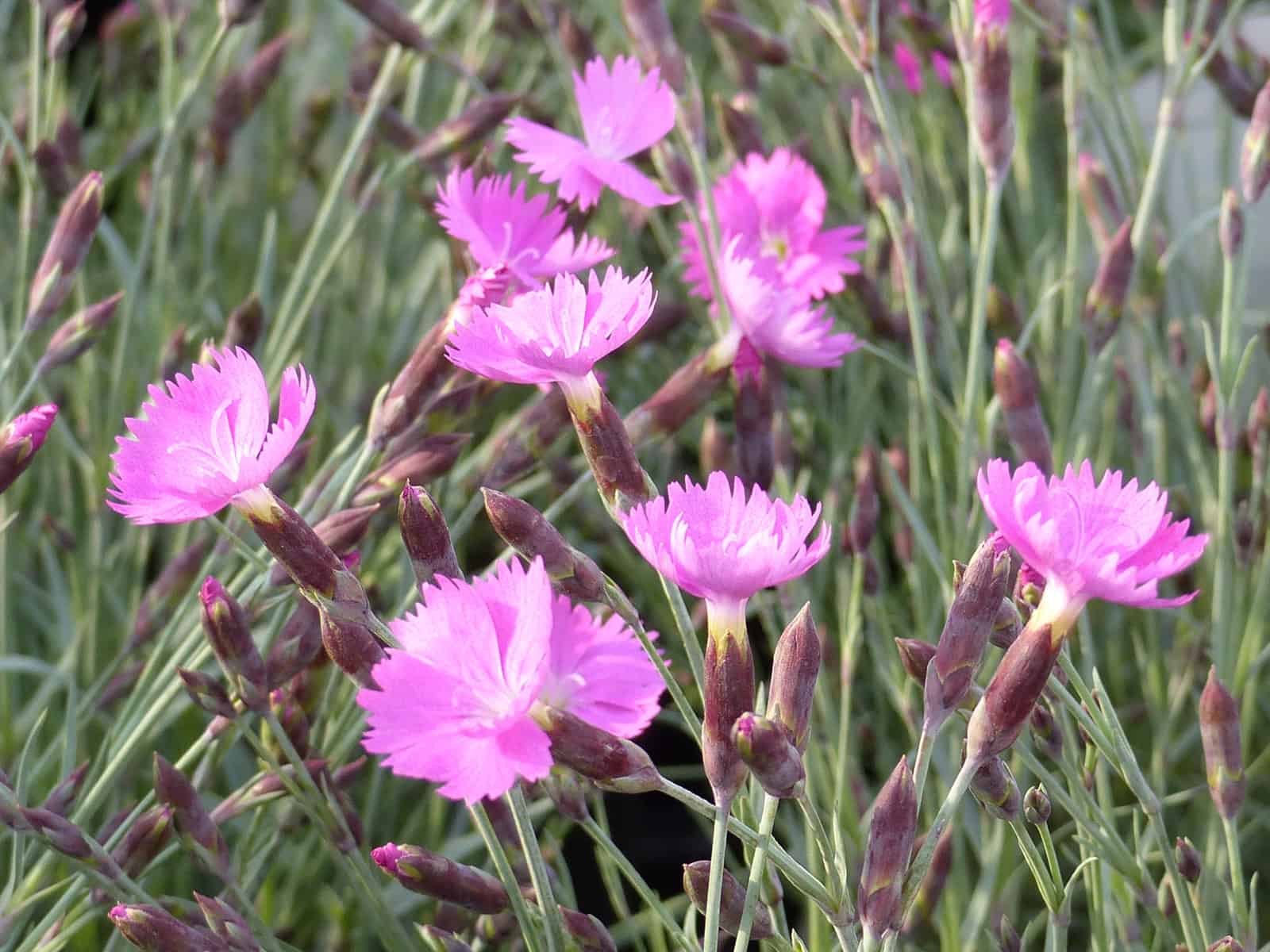
Culture: Easily grown in average, medium, well-drained soil in full sun. Prefers slightly alkaline soils. This hybrid tolerates heat and humidity (as well as some drought) better than most species of dianthus. Remove spent flowers to promote continued bloom. Avoid planting in areas with poor drainage where crowns will remain wet in winter.
Noteworthy Characteristics: Dianthus is a genus of over 300 species from Europe and north Asia to Japan. One species is native to North America. Most are evergreen and can be low-growing subshrubs, annuals, biennials or perennials. They are grown for their attractive, often fragrant, flowers. Many hybrids, often of complex parentage, have been made resulting in tens of thousands of cultivars.
Genus name comes from the Greek words dios meaning divine and anthos meaning flower.
The common name of pink for plants in the genus Dianthus is in probable reference to the fringed flower petal margins (they appear to have been cut with pinking shears) and not to flower color.
‘Feurerhexe’, commonly sold under the trade name of FIREWITCH, is a mat-forming cheddar pink that produces numerous, scented, bright magenta flowers singly atop wiry stems (to 6″ tall) arising from tufted mounds of grassy, deep blue, linear foliage. Blooms in spring with some intermittent repeat bloom in summer.
Problems: No serious insect or disease problems. Crown rot may occur in wet, poorly-drained conditions.
Garden Uses: Provides masses of color and good contrast for the rock garden or small border front. Good edging plant. Dense mats may be grown together to form an interesting ground cover. May also be grown on difficult sites such as stone walls.
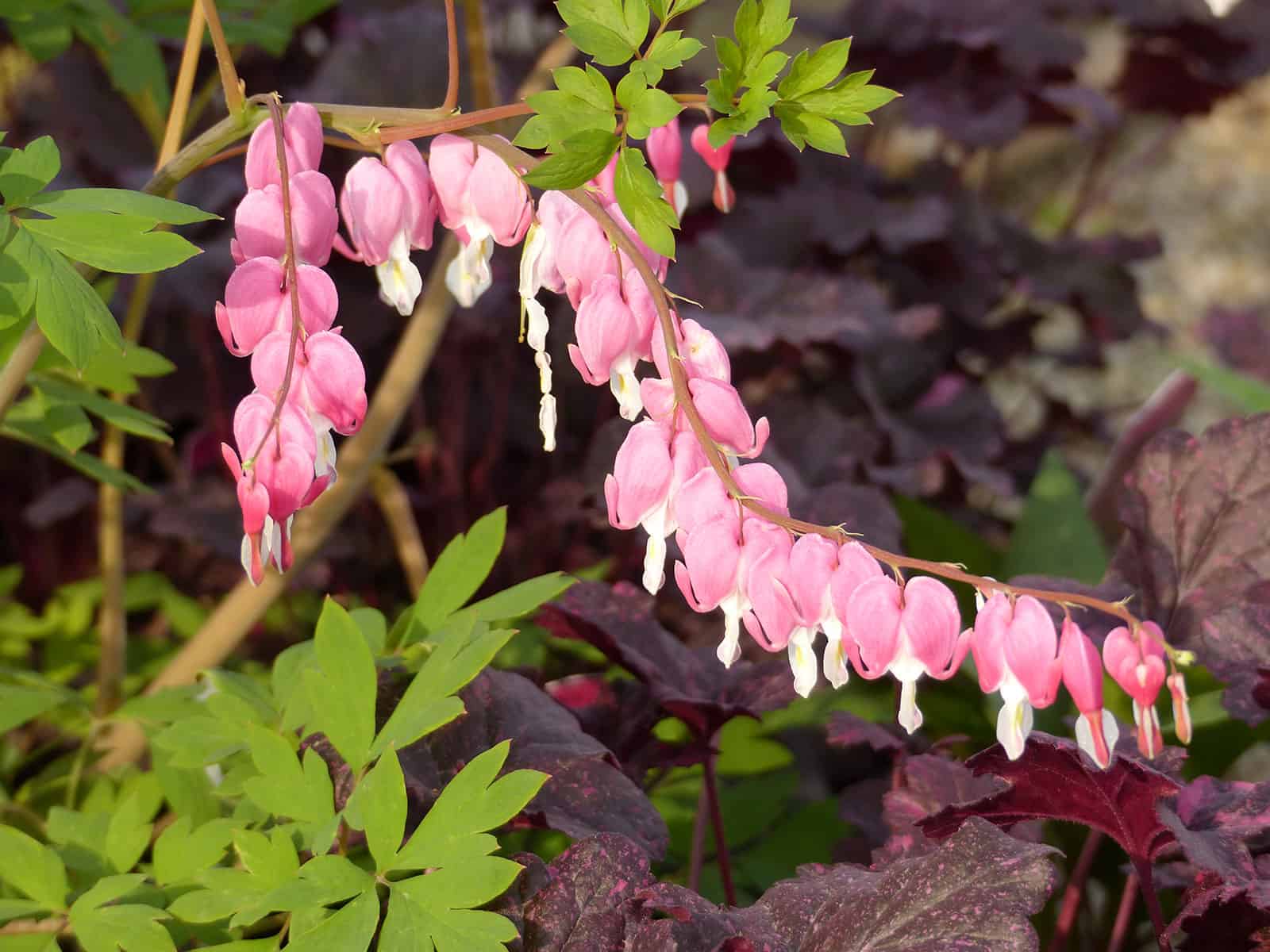
One of the most popular of old-fashioned garden plants, Bleeding Hearts burst into flower in late spring. Plants form a bushy, upright mound of light green foliage, with a somewhat ferny appearance. Dangling bright-pink locket flowers are held on arching stems, and these are excellent for cutting. Performs best in a rich, moist soil with partial shade, or at least protection from hot afternoon sun. After flowering, the plants should be sheared back to 6 inches tall, to rejuvenate the foliage. Even still, these often go completely dormant by midsummer, to return again the following spring. As an interesting sidenote, botanists have decided to change the name of the plant to Lamprocapnos spectabilis.